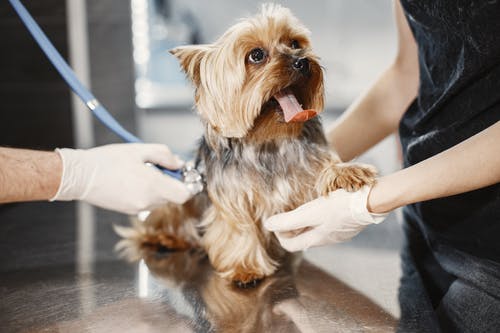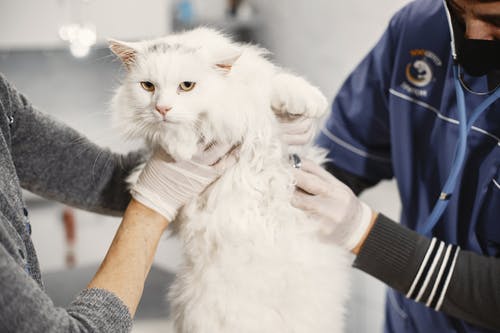How to Become a Relief Veterinarian
Are you looking to start a career as a relief veterinarian? Like conventional veterinarians, relief veterinarians play an important role in the lives of animals. They diagnose, treat and prevent ailments that could otherwise harm animals. Relief veterinarians, however, typically don’t work a fixed schedule, nor do they work at a single clinic. It’s a more flexible profession that gives you greater freedom. To learn more about relief veterinarians and how to become one, keep reading.
Overview of Relief Veterinarians
Relief veterinarians are licensed veterinarians who offer on-demand services to clinics. According to the U.S. Bureau of Labor Statistics (BLS), there are approximately 86,000 licensed veterinarians working in the United States. Most of these licensed veterinarians work at clinics. While some of them work a fixed schedule, others do not. Relief veterinarians are still considered licensed veterinarians — just like all veterinarians — but they provide their services when requested. A clinic may contact a relief veterinarian to request his or her services.
Veterinary clinics may request the services of relief veterinarians under the following circumstances:
- The clinic’s lead veterinarian is away on vacation, maternity leave or out sick
- An unusually high volume of clients
- The clinic is expanding and needs additional veterinarians
- Remote veterinary work
Complete a DVM Program
You’ll need to complete a Doctorate of Veterinary Medicine (DVM) program to become a relief veterinarian. The completion of a DVM program is necessary for all licensed veterinarians in the United States. Because relief veterinarians are licensed veterinarians, they must complete this rigorous education program as well. All relief veterinarians must complete a DVM program.
There are about 30 colleges in the United States that offer a DVM program. While they all revolve around the same curriculum — veterinary medicine — different colleges have different prerequisites. For most of them, you’ll need to earn a bachelor’s degree before enrolling in the college’s DVM program. A bachelor’s degree program will typically take about four years, and the proceeding DVM program will take an additional four years.
Obtain a License
You can obtain a license to practice veterinary medicine after completing a DVM program. Veterinary licenses are issued at a state level. To practice as a veterinarian, as well as a relief veterinarian, in a given state, you’ll need to obtain a license.
Most states have a veterinary medical association that’s responsible for issuing licenses. To obtain a license to practice as a relief veterinarian, contact your state’s veterinary medical association. The process for obtaining a license varies from state to state. For most states, you’ll need to complete an application, pay a fee and pass an exam. Assuming you score a passing grade on the exam, the state will issue you a license. You can then start your career as a relief veterinarian.

Determine Your Business Structure
Relief veterinarians typically aren’t classified as employees. Employees work a fixed schedule as directed by their employer. Relief veterinarians don’t work a fixed schedule, so they aren’t classified as employees. In most cases, they are classified as business owners. Relief veterinarians are generally classified as business owners who run and manage their own business while providing on-demand services to veterinary clinics.
As a relief veterinarian, you’ll typically own your own business. You may not have any employees. Nonetheless, you’ll own your business. You can structure your business in several ways. The easiest and simplest structure is a sole proprietorship. Alternatively, you can structure your relief veterinary business as a limited liability company (LLC) or an S corporation. Each business structure has its pros and cons. LLCs and C corporations, for instance, are more complex than a sole proprietorship, but they typically offer tax-savings benefits. To determine which structure is right for your relief veterinary business, consult with a professional accountant.
Contact Clinics
You can now contact clinics to see if they are in need of relief veterinarians. Start by creating a list of all veterinary clinics in your area. With this list in hand, you can then visit each clinic to see whether are interested in your relief veterinary services. You’ll probably have to complete an application. Clinics will review your application, and if they are in need of additional relief veterinarians, they may agree to contact you for work.
Keep in mind that you don’t have to work for a single clinic. Most relief veterinarians work for multiple clinics. After all, relief veterinarians don’t work a fixed schedule. They only work when requested by a clinic. By contacting multiple clinics, you’ll create more work opportunities.
In Conclusion
Relief veterinarians may provide many of the same animal care-related services as conventional veterinarians, but it’s a different profession. Conventional veterinarians work a fixed schedule, whereas relief veterinarians work on demand. You can become a relief veterinarian by completing a DVM program, obtaining a veterinary license, determining your business structure and contacting clinics in your area.

